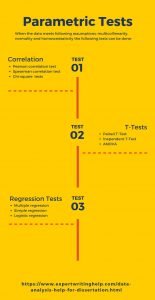Comparison of R Studio vs STATA vs SPSS
 As a data analyst, either in practice or still a newbie, learning the ropes in data analysis, you have to know your tools of work. Data analysis is a whole process that could be as simple or as complex as you want it. It basically entails the systematic application of statistical and logical techniques to evaluate data. You go to work using a certain route and every day by half-past seven there is always traffic, then with this data, you are free to make a decision to choose another route after you take into consideration all that you know. This is the basic application of data analysis in day to day life. However, taking this up a notch, data analysis is used on a large scale to make strides in science, economics and pretty much any other aspect of life. However, analyzing large data need you to use the best tools there is.
As a data analyst, either in practice or still a newbie, learning the ropes in data analysis, you have to know your tools of work. Data analysis is a whole process that could be as simple or as complex as you want it. It basically entails the systematic application of statistical and logical techniques to evaluate data. You go to work using a certain route and every day by half-past seven there is always traffic, then with this data, you are free to make a decision to choose another route after you take into consideration all that you know. This is the basic application of data analysis in day to day life. However, taking this up a notch, data analysis is used on a large scale to make strides in science, economics and pretty much any other aspect of life. However, analyzing large data need you to use the best tools there is.
If you are here then I bet that you have heard of STATA, R and SPSS and are probably wondering, what is the difference between them and what are the pros and cons behind each of them and even more importantly which is the best for me. Well, you are in the right place as I intend to give you all the answers that you seek. For starters, these are three different tools that are aimed at doing the same kind of work but have different specs to them and are tailored differently. They differ in user-friendliness, the scope of work they can accomplish, their capacity and many other differences that I will be sharing with you. To get a good insight into them, let’s step into their arena and get to learn about them more.
R
R came into play in the mid- 90s from Ross and Robert and this explains why they choose R as the name of their product. It gained popularity over time as a very user-friendly and well-tailored data analysis tool. It is very effective in designing statistical models to solve complex statistical problems. Notably, R is free open source software, therefore, it is compatible with any operating system. Besides a point and click user interface, the program has command line and savable files that gives it ability to engage matrices, vectors as well as delineate aesthetic graphs and make it easy for users to interact with them all thanks to its graphical library.
- R is very good for data analysis
- Complex for beginners
- Facilitates interaction with databases
- It supports a variety of extensions
- Proper organization of data in columns and rows
- Has a variety of tools such as scatterplot 3D and high charter or data science application
- Constant update of the system
- It is ideal for data wrangling
- Steep learning curve
- Free open source software
STATA
STATA is a statistical software used in data analysis that enables users to analyze, manage and graphically represent data in a more meaningful way that allows them to make inferences as well as draw conclusions. Among the many reasons why people prefer to use stats are ;
- STATA is easy to learn for beginners and easy to use as well
- it is supported by a wide range of introductory textbooks
- it is well-controlled by STATA Corp so that one can have real faith in STATA ’s results
- using STATA really does help students to learn about statistics
- it offers a wide range of statistical analyses
- it has a great degree of flexibility
- it presents results in a clear format
When dealing with a data analysis assignment one of the very first thoughts you will have is, which is the best software for me to use in data analysis? And truth be told, you will wonder whether or not you will be able to deliver on your project. Well, I cannot assure you that you will deliver but I know people who will, You can contact us for data analysis help using R, STATA or SPSS. These are the guys for the job. With years of experience handling project after project, then you can be sure that our writers have an up to date database on all that you may need. This cuts across the board, right from choosing the right topic ideas for you, having the right structure for your paper, driving a valid argument for your case and most importantly giving you an authentic, original project. Have I mentioned that we have a 99% success rate in our work and this is the kind of thing you should look for before you decide on who you want working with you?
You are probably wondering, ‘with this kind of record and delivery, you guys must be charging a fortune.’ Well, you can put that thought aside and save some cash working with expert writing help services, thanks to unimaginably affordable deals and you get a free ‘side dish’ of free, unlimited reviews as well. And to show you that we do not compromise on our quality, we let you in on the progress through our 24/7 open customer care line, if that is not quality, then I don’t know what is.
SPSS
SPSS was created by SPSS Inc and later in 2009 was acquired by IBM Corporation and renamed IBM SPSS Statistics Package. SPSS is abbreviated from the statistical package for social sciences. The software contains a statistical analysis and toolpak for easier statistical analysis and open source integration. and SPSS has earned its spot in the market over time and has for the longest time dominated thanks to top-notch features.
- Supports data from multiple sources
- Ideal for large amounts of data
- Better for multivariate analysis
- Works better in social and medical sciences
- Best for complex data sets
- Has a direct generation of output for reports
- Ideal for forecasting and decision trees
- Advanced statistics and charting capabilities
- Custom tables add on package
You are probably wondering, is there any specific reason as to why I have ranked them in this order? Well, yes there is and I will prove that to you on a head to head comparison of these statistical analysis programs.
| SPSS
|
STATA
|
|
Used in medical and social sciences areas
|
Used mainly in economics and econometrics
|
| Mostly suitable for complex data sets | It is not very good for complex data analysis |
|
It is mostly used for small data and in its application
|
It has its application in large scale and cutting edge research |
| Performs muitivariate analysis for large dataset | Performs normal statistical analysis |
| Generates outputs into reports | Uses a command line and documentation features |
| Performs modeling on complex data | Not suitable for complex analysis and modeling |
| Excellent for data management | Ideal for researchers |
Verdict
Choosing the software to use is an uphill task more so if you are a newbie or student. Unfortunately you will need to interact with the software themselves, however, this overview will give you an idea of what you are looking for so as to look into it in depth. After all, the best way to know what you want is to get a personal feel of it.
I would recommend that social science students looking for a friendly program for statistical analysis for dissertation i do recommend SPSS.
If you are looking to advance in statistics and learn to perform complex statistical analysis and statistical modeling we recommend you learn R programming language. It is versatile and can perform complex statistical analysis on large datasets.
Economics researchers and econometrics students keen to learn on economic model development and testing should be keen to learn STATA.
Related Links
https://expertwritinghelp.com/blog/2019/02/06/statistical-tests/
https://expertwritinghelp.com/blog/2016/09/03/how-to-code-and-enter-data-in-spss/


